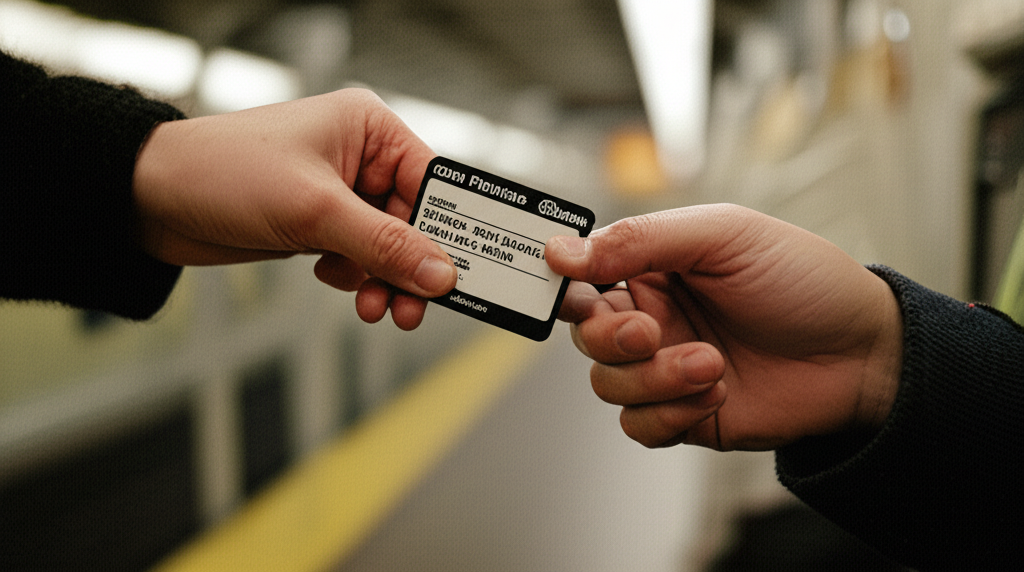Beginner’s Guide to Understanding Car Insurance
Ellie Moore

Photo: Beginner’s Guide to Understanding Car Insurance
Beginner’s Guide to Understanding Car Insurance
Navigating the world of car insurance can be daunting for beginners. With numerous policies, coverage options, and terminology, it’s easy to feel overwhelmed. This guide aims to demystify car insurance, helping you make informed decisions to protect yourself and your vehicle effectively.
What is Car Insurance?
Car insurance is a contract between you and an insurance company that provides financial protection against physical damage or bodily injury resulting from traffic collisions, theft, or other vehicle-related incidents. In exchange for your premium payments, the insurer agrees to cover certain costs associated with accidents or damages, ensuring you’re not left bearing the financial burden alone.
Types of Car Insurance Coverage
Understanding the different types of car insurance coverage is crucial in selecting a policy that meets your needs. Here are the primary types:
Liability Insurance
Liability insurance covers damages you cause to other people and their property in an accident. It’s typically divided into two parts:
- Bodily Injury Liability: Covers medical expenses, lost wages, and legal fees for the other party.
- Property Damage Liability: Pays for repairs or replacement of the other party’s property.
Collision Insurance
Collision insurance pays for damage to your own vehicle resulting from a collision with another vehicle or object, regardless of who is at fault. This coverage is especially valuable for newer or more expensive cars.
Comprehensive Insurance
Comprehensive insurance covers non-collision-related incidents, such as theft, vandalism, natural disasters, and hitting an animal. It’s essential for protecting against unforeseen events that could damage your vehicle.
Personal Injury Protection (PIP)
PIP covers medical expenses and, in some cases, lost wages and other related costs for you and your passengers, regardless of who is at fault in an accident. It’s mandatory in some states and optional in others.
Uninsured/Underinsured Motorist Coverage
This coverage protects you if you’re involved in an accident with a driver who has insufficient or no insurance. It ensures that your medical expenses and vehicle repairs are covered even when the at-fault driver cannot pay.
How Car Insurance Works
Understanding how car insurance operates can help you navigate claims and manage your policy effectively.
Premiums and Deductibles
- Premiums: The amount you pay, usually monthly or annually, to maintain your insurance policy. Premiums are influenced by factors like your driving history, age, vehicle type, and coverage levels.
- Deductibles: The amount you pay out-of-pocket before your insurance coverage kicks in during a claim. Higher deductibles typically lower your premium but increase your out-of-pocket costs in the event of a claim.
Claims Process
When an incident occurs, you file a claim with your insurance company. The insurer investigates the claim, assesses the damage or injury, and determines the payout based on your policy terms. Promptly reporting accidents and providing accurate information can expedite the claims process.
Factors Affecting Car Insurance Rates
Several factors influence your car insurance rates, including:
- Driving Record: A history of accidents or traffic violations can increase premiums.
- Age and Gender: Younger drivers and males often face higher rates due to higher risk profiles.
- Vehicle Type: High-performance or luxury cars typically incur higher premiums.
- Location: Urban areas with higher traffic density and accident rates can lead to increased costs.
- Credit Score: In some regions, a lower credit score may result in higher insurance rates.
Choosing the Right Car Insurance
Selecting the appropriate car insurance involves assessing your needs, comparing policies, and finding ways to reduce costs without compromising coverage.
Assessing Your Needs
Consider factors such as:
- Vehicle Value: Newer or high-value cars may require comprehensive and collision coverage.
- Driving Habits: Frequent drivers or those with long commutes might benefit from higher liability limits.
- Financial Situation: Ensure you can afford the premiums and potential deductibles.
Comparing Policies
When comparing car insurance policies:
- Coverage Options: Ensure the policy covers the necessary types of insurance for your situation.
- Policy Limits: Higher limits provide better protection but come with higher premiums.
- Exclusions: Understand what is not covered to avoid surprises during a claim.
Tips for Lowering Your Premiums
- Maintain a Clean Driving Record: Avoid accidents and traffic violations.
- Increase Your Deductible: Higher deductibles can lower your premium.
- Bundle Policies: Combining car insurance with other policies, like home insurance, can lead to discounts.
- Take Advantage of Discounts: Many insurers offer discounts for safe driving, vehicle safety features, and more.
- Maintain Good Credit: A better credit score can result in lower premiums in regions where it’s considered.
Common Car Insurance Myths Debunked
There are several misconceptions about car insurance that can lead to confusion and poor decision-making.
Myth 1: Reducing Coverage Lowers Premiums Significantly
While lowering coverage can reduce premiums, it also means less protection in the event of an accident. It’s essential to balance cost savings with adequate coverage.
Myth 2: Young Drivers Always Pay More
While age is a factor, young drivers can lower premiums by maintaining good grades, completing driver’s education courses, and demonstrating responsible driving habits.
Myth 3: Comprehensive Insurance Covers Everything
Comprehensive insurance covers a wide range of incidents, but it does not include collision-related damages unless specifically included in the policy.
Real-Life Examples and Case Studies
Example 1: Understanding Liability Coverage
Jane, a 30-year-old driver, was involved in a minor accident where she was at fault. Her liability insurance covered the other driver’s medical expenses and vehicle repairs, preventing Jane from bearing the full financial burden.
Example 2: The Importance of Comprehensive Coverage
Mike’s car was stolen and later found damaged due to vandalism. His comprehensive insurance not only reimbursed him for the stolen vehicle but also covered the repair costs, saving him thousands of dollars.
Frequently Asked Questions
What is the minimum car insurance required?
Minimum car insurance requirements vary by state or country. Typically, they include liability coverage for bodily injury and property damage. It’s essential to check local regulations to ensure compliance.
How can I lower my car insurance premiums?
You can lower premiums by maintaining a clean driving record, increasing your deductible, bundling insurance policies, taking advantage of discounts, and maintaining good credit.
Do I need car insurance if I have a loan or lease on my vehicle?
Yes, most lenders and leasing companies require you to maintain comprehensive and collision coverage to protect their investment in your vehicle.
Can my car insurance rates increase after filing a claim?
Yes, filing a claim can lead to higher premiums, especially if you’re deemed at fault. However, some insurers offer accident forgiveness programs that prevent rate increases after your first claim.
What factors should I consider when choosing a car insurance policy?
Consider coverage types, policy limits, premiums, deductibles, insurer reputation, customer service, and any available discounts or benefits.
Conclusion
Understanding car insurance is essential for every driver, providing peace of mind and financial protection on the road. By familiarizing yourself with the types of coverage, how policies work, and strategies to choose the right insurance, you can make informed decisions that best suit your needs and budget.
Ready to take the next step? Compare car insurance policies today, consult with an insurance professional, and secure the coverage that ensures you’re protected no matter what the road brings.
Have questions or experiences to share? Leave a comment below, share this guide with friends and family, or explore our related articles to continue your journey towards becoming a car insurance pro!
Finance & Investment
View All
October 28, 2025
Finance Yahoo Official WebsiteElevate your online presence with expert SEO content. Build trust, rank higher, and engage your audience with valuable, authoritative information, not just keyw...
Ellie Moore

June 3, 2025
Best Banks for Car FinancingMaster modern SEO by crafting expert content. Focus on user intent & E-E-A-T to rank higher, build trust, and truly engage your audience.
Ellie Moore

September 16, 2025
Personal Finance Management TipsUnlock expert SEO content secrets! Drive organic traffic, rank higher, and build brand authority by creating valuable, user-focused content.
Ellie Moore

March 23, 2025
Why ETFs Are Key to Modern Investing SuccessExplore the role of ETFs in creating a modern, diversified investment strategy. Learn how ETFs simplify investing and reduce risk for smart investors!
Ellie Moore

January 26, 2025
Snap Finance Customer Service NumberMaster expert SEO content to boost rankings, build authority, and drive traffic. Learn to create valuable, E-E-A-T-driven content that truly stands out.
Ellie Moore

October 22, 2025
NYC Gov Finance Ticket Payment GuideElevate your website with expert SEO content. Create valuable, authoritative, and trustworthy information that ranks high by meeting user intent and E-E-A-T.
Ellie Moore
Insurance
View AllDiscover how artificial intelligence simplifies claims, enhances accuracy, and speeds up insurance processes.
Ellie Moore
Learn how high-net-worth individuals get specialized insurance tailored to unique assets and risks. Discover luxury coverage!
Ellie Moore
Explore how your credit score affects insurance premiums. Learn how to improve your score and save on coverage!
Ellie Moore
Find out why term life insurance is more popular, affordable, and flexible than whole life. Choose the right coverage for you!
Ellie Moore
Learn how self-insured companies manage risks, reduce costs, and create customized insurance solutions for employees.
Ellie Moore
Learn how blockchain is enhancing transparency and security in modern insurance policies. Is your coverage future-ready?
Ellie Moore
Education
View AllSocial skills training is key for kids with autism. Learn practical strategies to improve social interaction and communication in children with ASD.
Read MoreHow does social media affect learning and behavior? Uncover the positive and negative effects of social platforms on students today.
Read MoreOutdoor learning promotes cognitive and social growth. Explore how nature-based education enhances learning outcomes and student well-being.
Read MoreUnderstand the causes, effects, and potential solutions to the student loan debt crisis. Learn what can be done to ease this financial burden.
Read MoreExplore the ongoing debate on standardized testing. Learn its pros, cons, and whether it should remain a key part of education.
Read MoreTeacher burnout is on the rise. Learn about its causes, consequences, and practical solutions to support educators and improve well-being.
Read MorePopular Post 🔥
View All
1
2
3
4
5
6
7
8
9
10
Health






Automotive
View All
February 3, 2025
Car Mods: Finding the Perfect Customization Balance
Explore how to balance car customization and performance. Learn tips for modifications that enhance style without compromising safety.

August 24, 2025
Harris Automotive Dependable Local Service
Choose a dependable local auto service for peace of mind. Harris Automotive offers trusted expertise, fair pricing, and top-tier care for your vehicle.

February 10, 2025
Spotting a Good Mechanic: Red Flags to Avoid
Need a reliable mechanic? Learn how to spot a good one and what red flags to watch out for. Don’t let poor service ruin your ride!

July 21, 2025
AAA Automotive Services You Can Count On
Never worry on the road again! AAA offers 24/7 roadside assistance, reliable car care, towing, battery service & more for ultimate peace of mind.

September 5, 2025
Top Automotive Swap Meets Near Me This Year
Unearth automotive treasures at vibrant swap meets! Find rare parts, classic cars, & connect with enthusiasts. Your guide to top events this year.

July 31, 2025
Understanding Automotive Components Holdings Value
Deep dive into the multi-trillion dollar automotive components market. Understand its value, growth, and why it's crucial for investors & enthusiasts.

















